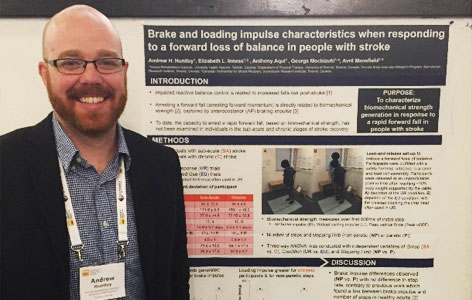
Conference Details: International Society of Posture & Gait Research, June 25–29, 2017, Fort Lauderdale, Florida, USA
Conference Highlight: The key message from ISPGR 2017 was the success of translating laboratory research into real-life solutions for use in rehabilitation and community settings.
Conference Summary: One extremely significant finding disseminated at ISPGR 2017 was the successful implementation and ongoing investigation of examining muscle synergies in both healthy older adults and individuals with neurological diseases (i.e., stroke, Parkinson’s disease, cerebral palsy, etc.) in the rehabilitation setting. By using a technique called electromyography (recording muscle activity via electrodes), researchers and clinicians are able to determine different types of muscle synergy patterns (timing and rate of muscle activation) while carrying out tasks such as walking. Based on the muscle synergies executed by an individual/patient, researchers and clinicians are better able to classify motor control impairment in children with cerebral palsy, stratify older adults at high risk of falling, and identify patient-specific balance control deficits in individuals with stroke. These findings are significant because they demonstrate how the application of research techniques in clinical settings can improve the provision of health care to individuals across a range of populations.
Another significant finding disseminated at ISPGR 2017 was the keynote talk given by Dr. Gregoire Courtine. Dr. Courtine’s work is focused on spinal cord injury rehabilitation. His group has developed a wireless and implantable neuroprosthetic that can deliver specific stimulations directly to the spinal cord in individuals with partial spinal cord separation and injury. Results presented at ISPGR 2017 demonstrated not only that the neuroprosthetic can improve spinal cord injury rehabilitation and help patients to regain the ability to walk, but it can also enable individuals who had no motor function in their lower limbs to extend and flex their legs. These findings demonstrate the amazing ways in which research can improve the lives of individuals with spinal cord injury.




